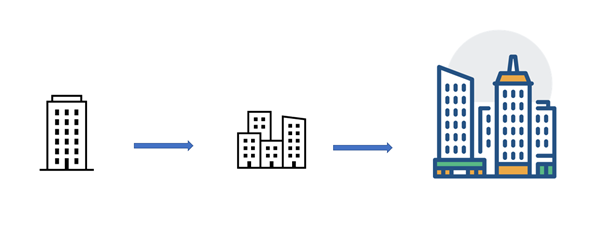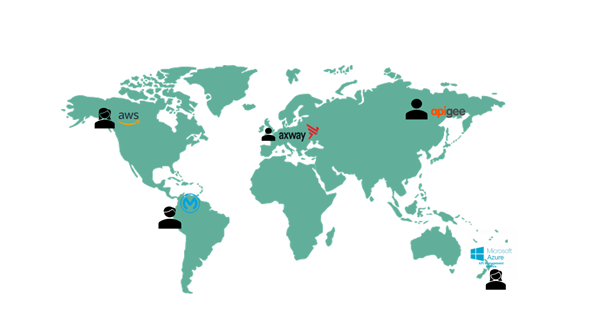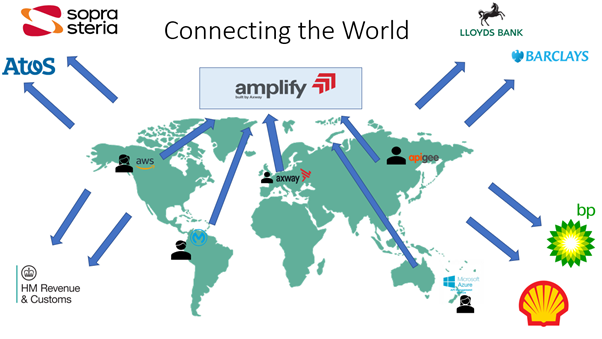A successful enterprise is like a productive human being. A flourishing human (for whatever success means to each of us) starts their life knowing nothing.
We learn to walk, to interact with the environment, and how to cope with challenges. We develop our unique characteristics and use the “signals” we receive from our childhood environment to develop character and thrive in life. Therein lies the challenge.
Enterprise success story and its challenges
An adult is to an extent a “product” of our parents, meaning that an individual’s growing environment plays a role in the development of their character. Every human being has a legacy inherited as well and must control and filter the signals of their past life to influence our behavior for a successful life.
Similar phases
In the case of a successful company, the phases are similar. From a small startup to a medium-sized stable company that makes a couple of acquisitions, which grows and expands their teams and footprint.
They then become more diverse both in the human force and the variety of inherited applications in their internal and partner ecosystem.
The end state of a successful enterprise is a company that has developed character throughout the years and the decisions of the management, but has inherited a legacy that brings complexity which brings challenges.

“APIs here, APIs there, APIs everywhere”
What is an API? To position it simply, it’s a “manual” of how to connect with a respective application. If you buy a dishwasher, then the API is the manual that comes with it.
If you are a large warehouse and you hold stock that you want to re-distribute via third parties, you may want to expose an API that logistic companies can leverage, get information of available stock, and be also able to secure it for redistribution.
This is how you open your business to the world. Technically, this would be a database that holds your stock information and would have an API exposed that could be leveraged to get the aforementioned information.
However, the difference between the dishwasher manual that was mentioned before, and your well-written Database API are that the latter should be much easier to understand! So, in conclusion, an API when it comes to software applications, are pretty much the “interfaces” that allow for connection and exchange of data between the applications.
APIs are the present and the future of enterprise app communications. They become more the norm and large enterprises are switching to an API-first approach. Here comes the successful enterprise we were discussing above. Having a successful but complex ecosystem poses the potential for success but challenges as well.
Let’s take an example of such a complex global enterprise and how its ecosystem could look like:

When you have a complex environment, you have challenges that are inevitable in such as difficulties managing assets and discovering assets throughout your organization. When we speak about API communications, an API management solution is required to provide such a level of governance to a range of applications.
However, complexity occurs when due to various reasons, an enterprise ends up having several API Teams maintaining different API Management solutions across their ecosystem.
Duplication
Duplication of APIs and costs involved in maintaining those in different solutions skyrocket IT budget for reasons that could be avoided. In situations like this, you end up “re-inventing” the wheel while it has already been “invented” by your colleague in another region, and you just don’t know it because you lack visibility.
The correct question here is: “How can you govern in general your estate without having to rely on a chain of human communications that may take hours or even days due to different time zones (potentially)?”
Different solutions
Below we see how an enterprise with various teams working on different solutions could look like based on the following assumption:

Assumption: “Azure Team in New Zealand maintains an API that provides specific functionality that the integration team in the UK that uses Axway software would like to take advantage of.”
• Without “Centralized Governance and Visibility,” the UK team should either hold meetings often with the rest of the world updating each other on what they use, they could have a manual repo for uploading the specs of each other’s APIs or just simply be “mediums” and guess what their colleagues work on.
Realistically, any of the above scenarios (apart from the case of the medium), it’s not feasible and would create even further complexity.
• With “Centralized Governance and Visibility” things would look like the picture below:

In this scenario, with “Centralized Governance and Visibility,” what changes are that all the members of an organization can have a single point of truth, a single “marketplace of truth” for the Integration Assets that they can reuse within their organization, that either they or their fellow teams have created.
To connect it with the above scenario, the UK Axway API Management Team can now instantly have visibility to the assets that the New Zealand Microsoft Azure team is holding within their Gateway.
Take it to the next step
When you have successfully connected and harmonized your environment within your enterprise, you are ready to share your data securely with your broader ecosystem.
This could be partners, customers, developers that build apps to leverage your data and your applications.
Unlimited opportunities can be now unlocked, such as exponential growth and expansion of your ecosystem, onboarding of partners, monetization of assets, to mention a few.
At the end of the day, your data is precious, but it will have no value if they are not shared (securely) as part of a broader ecosystem to reveal opportunities and keep an eye on the future to ensure a successful path for your enterprise.

Conclusion
The element of centralized “Governance “in the organization’s ecosystem is of major importance and is both directly and indirectly linked down to the business value and growth. It may sound like a technical concept but is a business concept at heart.
Discover more about the Amplify API Management Platform and API Central Governance.
Contact:
Email: gpagiatakis@axway.com
LinkedIn: linkedin.com/in/georgios-pagiatakis-00887075


